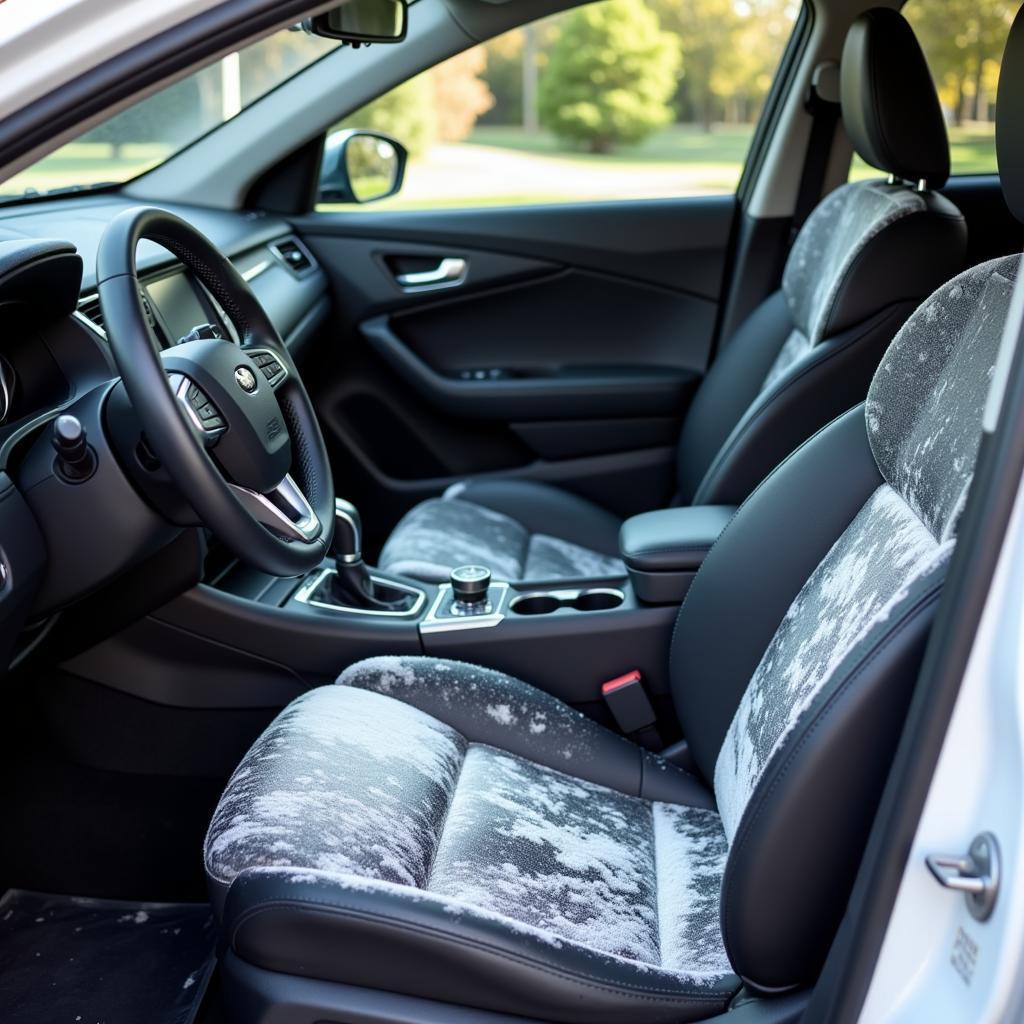Final Inspection Car Detailing is the crucial last step in the detailing process, ensuring a flawless finish and maximum client satisfaction. It’s the moment where meticulous attention to detail pays off, transforming a simply clean car into a showroom-worthy masterpiece. This stage involves a comprehensive check of every surface, inside and out, to catch any imperfections before handing the keys back to the owner.
Why is Final Inspection Car Detailing So Important?
Final inspection car detailing is more than just a quick once-over. It’s about guaranteeing quality, building trust, and showcasing the value of professional detailing. A thorough inspection ensures that all the hard work put into the previous stages isn’t undermined by a missed smudge, a stray water spot, or an overlooked imperfection. This step demonstrates a commitment to excellence and leaves a lasting positive impression on the client. Catching any flaws during this stage allows for immediate correction, preventing rework later and ultimately saving time and resources. This attention to detail also helps protect the long-term value of the vehicle, ensuring the detailing services have truly enhanced its appearance and preservation.
Key Elements of a Thorough Final Inspection
A comprehensive final inspection involves a systematic approach, covering all aspects of the vehicle. This includes inspecting the exterior, interior, and even under the hood. Each area demands specific attention to detail, ensuring no imperfections slip through the cracks.
Exterior Inspection
The exterior inspection begins with a careful examination of the paintwork. Look for any swirl marks, scratches, or holograms that might have been missed during the polishing stage. Next, inspect the wheels and tires for any remaining dirt or dressing residue. The glass should be spotless, free of streaks or smudges. Finally, check all trim and chrome for proper cleaning and polishing.
Interior Inspection
Moving to the interior, start by checking the seats and carpets for any lingering stains or debris. The dashboard, console, and door panels should be free of dust and fingerprints. Inspect the glass for streaks and smudges. Don’t forget to check the headliner and visors. Finally, ensure all compartments and storage areas are clean and organized.
 Interior Detailing Final Inspection – Seats and Dashboard
Interior Detailing Final Inspection – Seats and Dashboard
Under the Hood Inspection
While often overlooked, checking under the hood adds a final touch of professionalism. Ensure the engine bay is clean and free of any excess dressing.
Common Mistakes to Avoid During Final Inspection
Even experienced detailers can make mistakes during the final inspection. Rushing through the process can lead to overlooked imperfections. Insufficient lighting can also hinder the ability to spot minor flaws. Lack of a systematic approach can result in inconsistencies. Finally, failing to document the inspection process can create issues if any concerns arise later. Like with car detailing water damage, a proper inspection is vital.
Tools and Techniques for Effective Final Inspection
Several tools and techniques can enhance the final inspection process. Using a bright inspection light can help reveal even the smallest imperfections. A magnifying glass can be helpful for close-up examination of paintwork. Keeping a checklist ensures a systematic approach and prevents any areas from being overlooked. Finally, taking photos or videos of the completed detail can serve as documentation and provide a visual record of the quality of work. Much like those working in car restoration detailers, using the correct tools makes all the difference.
Tips for a Perfect Final Inspection
To achieve a truly flawless finish, consider these additional tips. Inspect the vehicle in a well-lit area, preferably outdoors in natural light. Take your time and be methodical. Use a checklist to ensure you cover all areas. Don’t hesitate to use tools like inspection lights and magnifying glasses. Document the inspection process with photos or videos. And finally, always strive for perfection. These practices are even used at companies offering services like car wash detailing blue springs mo. Similar to the principles of car detailing organization, a systematic approach is crucial for success. If you’re operating a business like clean cars auto detailing clearwater fl, these techniques will elevate your service offerings.
Conclusion
Final inspection car detailing is the ultimate quality control measure, guaranteeing client satisfaction and showcasing the true value of professional detailing. By following a systematic approach and utilizing the right tools and techniques, you can ensure a flawless finish every time, leaving a lasting impression of excellence. Remember, final inspection is not just about finding flaws, but about demonstrating a commitment to perfection.
FAQ
- What is the purpose of final inspection car detailing? To ensure a flawless finish and catch any imperfections before returning the vehicle to the client.
- What areas should be covered during a final inspection? Exterior, interior, and under the hood.
- What are some common mistakes to avoid during final inspection? Rushing, insufficient lighting, lack of a systematic approach, and failing to document the process.
- What tools can enhance the final inspection process? Bright inspection light, magnifying glass, and checklist.
- Why is documentation important during the final inspection? It provides a visual record of the quality of work and can be used to address any future concerns.
- How does final inspection relate to car restoration detailers? Both require a meticulous eye for detail and a commitment to achieving a pristine finish.
- Why is organization important in car detailing? Like any process, good organization ensures efficiency and a consistent outcome.
Need further assistance? Contact us via WhatsApp: +1(641)206-8880, or Email: [email protected]. Our customer support team is available 24/7.

Leave a Reply